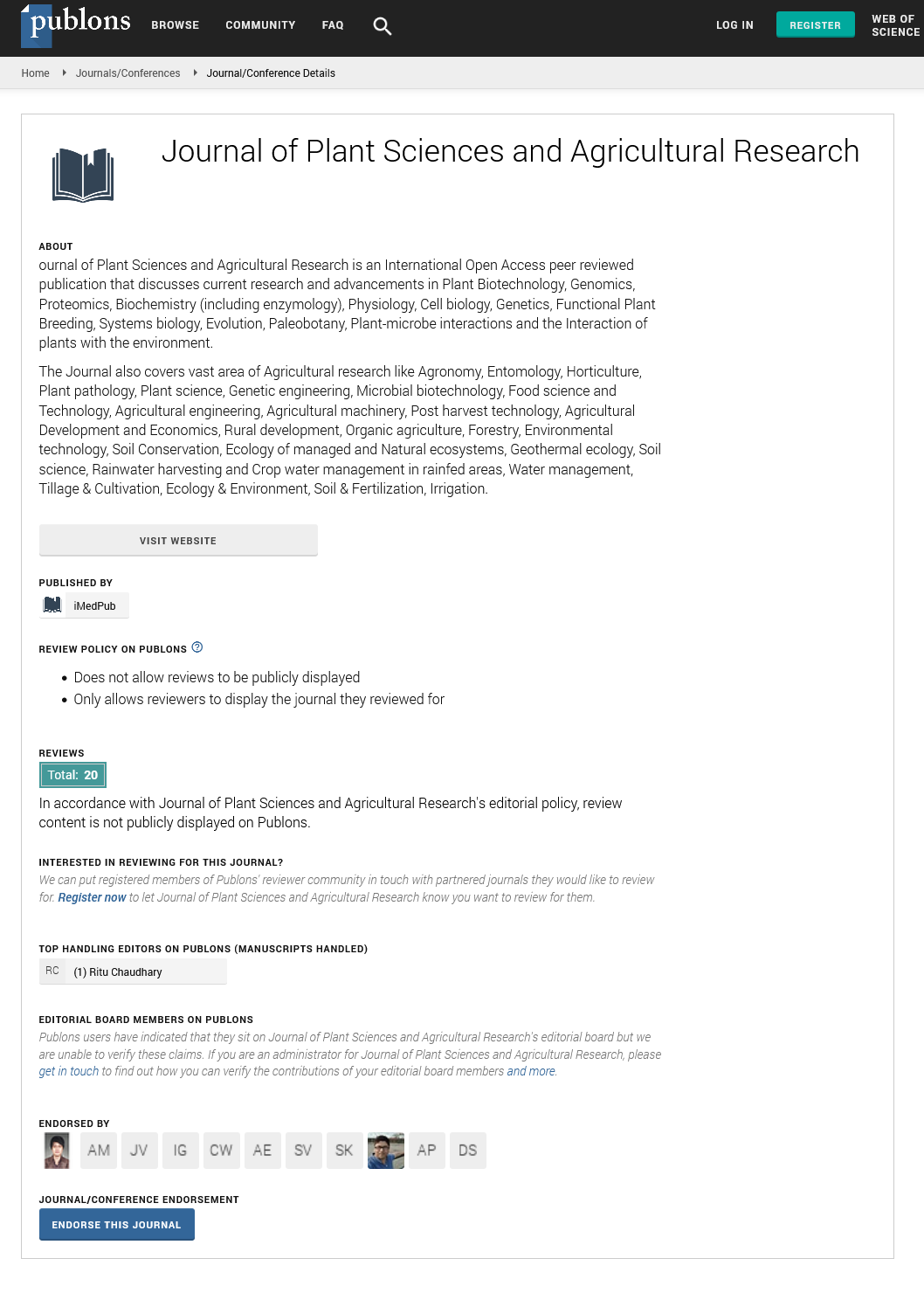Abstract
Effect of 6-Benzyl Amino Purine on In Vitro Multiplication of Tomato (Lycopersicon esculentum Mill.) Varieties using Shoot Explant
The production of tomato using improved varieties is necessary to increase its production. However, the improved varieties could be from selection or hybrid seeds. Distribution of hybrid seeds through conventional breeding is slow, time-consuming; need more space, labor intensive and transmission of pathogens may also occur. Mass propagation using tissue culture may help to solve these problems. Hence, the present study was initiated to optimize an in vitro multiplication protocol for two Ethiopian tomato varieties using shoot tip culture. For shoot initiation BAP at 0.0, 0.5, 1.0, 1.5, 2.0 and 2.5 mg/L concentrations were. The initiated shoots were cultured in MS having BAP at a concentration of 0.0, 0.75, 1.0, 1.5, 2.0, 2.5 and 3.0 mg/L for multiplication. The experiments were laid out in CRD. The ANOVA showed that the interaction of BAP*Var was not significant for percentage and days of initiation at p<0.01. Both the earliest (5.6 days) and highest percentage of initiation (98%) was obtained on free MS medium. While the minimum percentage of initiation (64%) and late initiation (12 days) was on 2.5 mg/L BAP. It also revealed that the interaction of BAP*Var on number of shoots/explants was highly significant, but not for shoot length and number of leaves. Chali gave the highest number of shoots/explant (3.00 ± 0.00) at MS +2.5mg/L. For Gelilema it was 2.78 ± 0.19 shoots/explant on MS +2 mg/L. The highest shoot length (5.32 cm) and number of leaves (4.33) was recorded on MS +0.75 mg/L. whereas, the lowest shoot length (3.31 cm) and leaf numbers (2.48) was obtained on MS +3 mg/L. It can be concluded that free MS medium was the best for shoot initiation. But, for shoot multiplication, MS +2 mg/L for Gelilema and MS+2.5 for Chali were preferred. The optimized protocol will be useful for rapid in vitro multiplication of the two varieties. However, further studies are suggested for protocol improvement using other PGRs, combinations and explants.
Author(s): Endalkachew Baye, Temesgen Matewos and Derbew Belew
Abstract | Full-Text | PDF
Share This Article
Google Scholar citation report
Citations : 135
Journal of Plant Sciences and Agricultural Research peer review process verified at publons
Abstracted/Indexed in
- Google Scholar
- Publons
- Secret Search Engine Labs
Open Access Journals
- Aquaculture & Veterinary Science
- Chemistry & Chemical Sciences
- Clinical Sciences
- Engineering
- General Science
- Genetics & Molecular Biology
- Health Care & Nursing
- Immunology & Microbiology
- Materials Science
- Mathematics & Physics
- Medical Sciences
- Neurology & Psychiatry
- Oncology & Cancer Science
- Pharmaceutical Sciences
